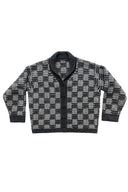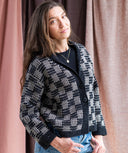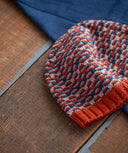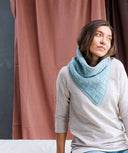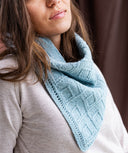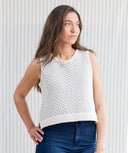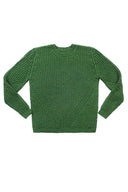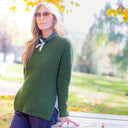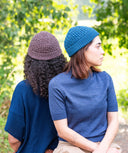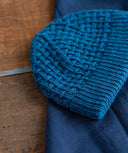Short Row Shaping 101

Shaping knitted fabric can occur in different ways, and in the past we’ve discussed shaping fabric by increasing or decreasing stitches in our Foundations series on reading your knitting. Changing the stitch count alters the width of the piece, but what about adding height? There are many scenarios in which you can achieve a more anatomical fit or build curves and wedges into your fabric by adding more rows to a particular group of stitches and not to others. These partial rows are called short rows, and this post will guide you through one of the most popular methods to create them: the wrap and turn method. We invite you to grab an old swatch, tink back a few rows, and give it a try as you read along — short row shaping is a technique that may look baffling when you read the directions, but they are straightforward when you take it one step at a time.
Wrap-and-Turn Short Rows in Stockinette Stitch
Work to the stitch that will be wrapped, and then complete the following steps:
On a knit row,
Step 1: Slip next stitch to Right needle.

Step 2: Pass working yarn from back to front.

Step 3: Slip stitch back to left needle.

Step 4: Turn to work purl row, passing yarn to front of work. When you work the next stitch, take care to pull yarn snugly.

On a purl row,
Step 1: Slip next stitch to R needle.

Step 2: Pass working yarn from front to back.

Step 3: Slip stitch back to L needle.

Step 4: Turn to work knit row, passing yarn to back of work.

When you come to a wrapped stitch in subsequent rows, pick up and knit the wrap as follows:
For knit stitches,
Step 1: Identify the wrap.

Step 2: Insert the R needle into the wrap and then into the wrapped stitch and knit them together.


For purl stitches,
Step 1: Identify the wrap.

Step 2: Insert the R needle from behind, under the wrap, and then into the wrapped stitch, then purl them together.

Where to Use Short Rows in Knitting
 One place you’ll often encounter short rows in a traditional garment pattern is across the back of a sweater. A sweater with a curved hem certainly uses short row shaping, but you may be surprised to find short rows hiding in a garment that looks perfectly straight. Because most humans don’t have perfect posture and our shoulders tend to curve forward slightly, adding short rows to the back can keep the hem from riding up as we move about in the many actions that require us to bend forward or reach for something in front of us. You’ll never notice the short rows are there when you look at the sweater, but they’ll be quietly working to give you a comfortable fit so you’re not always pulling your hem back into place. Most of us also prefer the back neckline of a sweater to be higher than the front, so that the fabric doesn’t rub across our throats. This is why a garment worked in the round, particularly one with a circular yoke such as Gudrun Johnston’s Voe sweater, will often include short rows across the back just at the level of the armholes and perhaps again just before the neck edge.
One place you’ll often encounter short rows in a traditional garment pattern is across the back of a sweater. A sweater with a curved hem certainly uses short row shaping, but you may be surprised to find short rows hiding in a garment that looks perfectly straight. Because most humans don’t have perfect posture and our shoulders tend to curve forward slightly, adding short rows to the back can keep the hem from riding up as we move about in the many actions that require us to bend forward or reach for something in front of us. You’ll never notice the short rows are there when you look at the sweater, but they’ll be quietly working to give you a comfortable fit so you’re not always pulling your hem back into place. Most of us also prefer the back neckline of a sweater to be higher than the front, so that the fabric doesn’t rub across our throats. This is why a garment worked in the round, particularly one with a circular yoke such as Gudrun Johnston’s Voe sweater, will often include short rows across the back just at the level of the armholes and perhaps again just before the neck edge.



